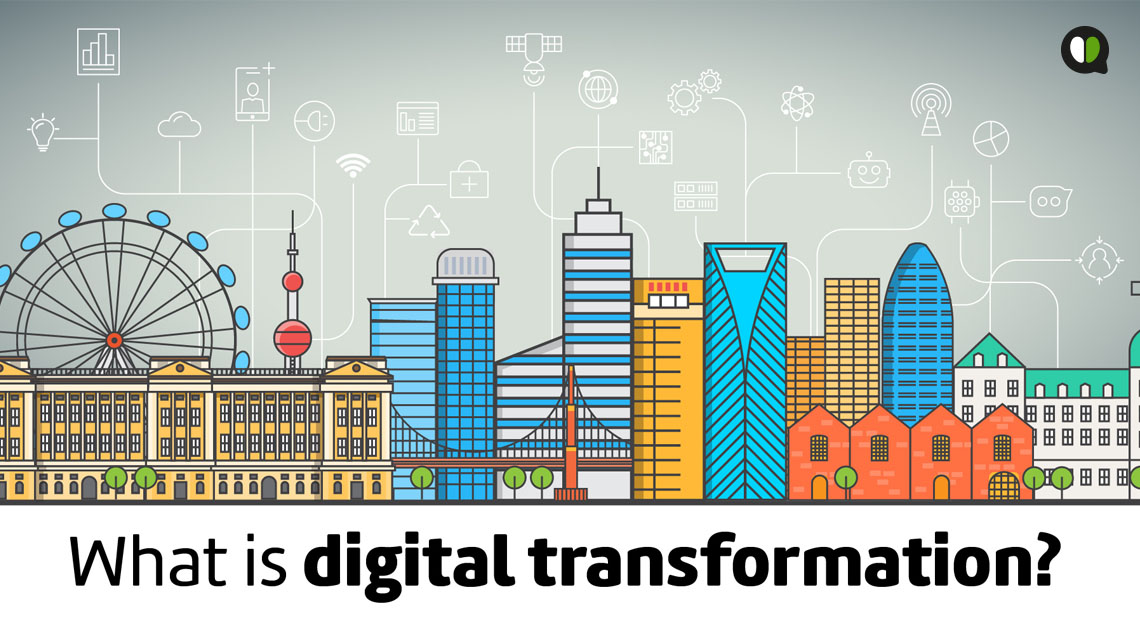What is Digital Transformation?
If you would like to watch a whiteboard video (info-graphic) of this post, click here
What is digital transformation?
Digital technology is delivering people information, choice and convenience. The way we use technology in our personal lives, work and society has changed the face of business. Because of progress in technology and adoption in cloud, artificial intelligence, big data, Internet of Things (IoT ) and mobile mobility, businesses must re-think their business models on how to meet their customer’s needs through innovation.
So what is the definition of digital transformation?
Digital transformation is the integration of digital technology into all areas of business (internally and externally), and it has changed the way businesses operate to deliver value to their customers. Digital transformation is a cultural shift of activities, processes and competencies within organizations to be more agile, customer-centric, streamlined and more efficient. A key driver of digital transformation is innovation and adoption of new forms of digital processes. It leverages today and tomorrow’s opportunities to increase efficiency and keep up with fast-changing market demands.
How did digital transformation emanate?
Digital transformation emerged because of the following factors:
- Customer behavior, expectations, and demands
- New economic realities
- Societal shifts (e.g. aging populations)
- Ecosystem / industry disruption
- Emerging or existing digital technologies
Why does digital transformation matter?
In today’s marketplace, digital innovators are leading the way to disrupt traditional marketplaces – consider Uber and Amazon. How customers engage and adopt with these companies is changing the business landscape rapidly. These companies use new technologies which provide product optimization, increased production output and improve operational efficiency, thus cutting operational costs. According to IDC, Worldwide spending on digital transformation technologies (hardware, software, and services) hit $1.3 trillion in 2017. Between now and 2021, digitalization is expected to surpass $2.1 trillion (globally).
Digital transformation examples
Domino’s Pizza
Domino’s Pizza has developed a platform called ‘AnyWhere’ that lets customers place orders from smart TVs to smartphones, from tablets to smartwatches and even from Twitter. The next phase of its evolution will be via voice command.
Caterpillar
Caterpillar has developed a mechanism that collects all the performance data of its tractors and cranes and is able to predict the most appropriate times for preventive maintenance of equipment before any problems occur, thus making their products more durable, saving owners money.
General Electric (GE)
GE is using 3D printing (known as additive manufacturing) to make fuel nozzles for their passenger jet engines. Prior to the adoption of 3D printing, the fuel nozzles were made up of 19 separate parts, all machined together. Today the fuel nozzles are produced within 1 print, saving time and manufacturing costs. Plus the fuel nozzles are 5 times stronger than what they were originally.
Every industry including governments has a unique digital transformation opportunity to innovate, provide solutions and fulfil people’s needs within the connected world. But changing business processes and corporate culture is just as important to the adoption of new technology by organisations.
